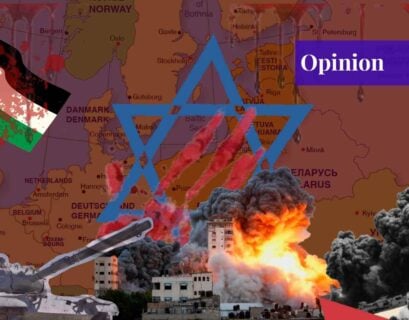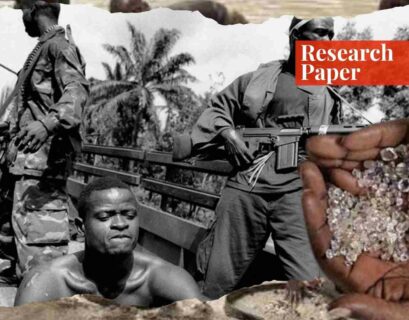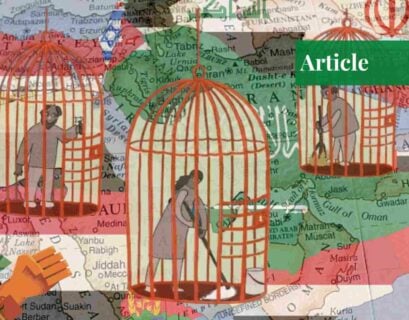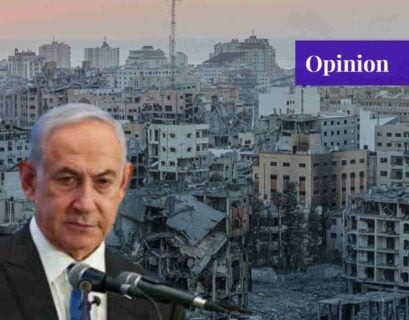Iman Faisal is currently pursuing her bachelor's in peace and conflict studies from National Defense University Islamabad. Her areas of interest are the Middle East, South Asia, Africa, sectarian conflicts, terrorism, and criminology.
Social Identity Theory
The genocide in Rwanda is one of the bloodiest conflicts in world history. Since it took place in Africa, it was not given due attention. The conflict resulted in the ethnic cleansing of 800,000 Tutsis at the hands of the Hutus – a majority group in Rwanda. The 100-days of the conflict have left deep marks on the Rwandan state and society. Social identity theory is considered to be the most suitable lens to study the manifestation of violence on such a massive scale.

The theory was presented by Tajfel and Turner. They provide a pattern through which the genesis of identity clashes can be studied comprehensively in detail. The warring groups categorize themselves as in-group and out-group. Then individuals identify themselves with the group they consider as in-group. The opponent individuals are viewed as an out-group.
After the group identification, both the identities compare themselves with each other. This element of social comparison bolsters the self-esteem of each particular group. Every group scrutinizes the “other” as inferior to it. These processes lay out the manifestation of the conflict.
The theory also highlights the importance of social integration and inclusion. It assumes that social categorization internally weakens a state and makes it vulnerable to external attacks. It is important to understand the genocide in Rwanda as the same categorization process but it is taking place on the basis of wealth and financial capital. Where will it take the world to, is yet to be explored.
Genesis of the Genocide in Rwanda
Rwanda was a multi-communal society comprising Hutus (80%), Tutsis (10-15%), and Twa (1-2%). Tutsis possessed cattle and Hutus were farmers. They coexisted peacefully under a Tutsi monarchy, and no disparities existed. Hutus and Tutsis married inter-racially but then, Rwanda was handed over to Belgium under the mandate of the League of Nations Trusteeship Council.
Belgium continued ruling indirectly, by supporting and preferring Tutsi monarchs and chiefs. Tutsis dominated resources and political institutions. Therefore, the disenfranchisement led to the clash of identities. After overthrowing the Tutsi monarchy in 1956, the Hutus started fearing the return of Tutsis. They started to implement discriminatory policies against Tutsis which forced them to flee to neighboring countries or far-flung areas of Rwanda.
As a result of the oppressive regime, an insurgency was initiated by the Tutsi-led Rwandan Patriotic Front (RPF) in 1990 for the purpose of achieving their previous social status. In 1993, a power-sharing agreement was designed under the leadership of then-President Juvenal Habyarimana to settle the conflict and satisfy all parties, called the Arusha Accord.

On 6th April 1994, a plane carrying President Habyarimana and his counterpart Ntaryamira of Burundi crashed. One hour after the crash, extremist Hutus along with Presidential Guard Forces and Hutu militia started blocking roads and placing barricades throughout Rwanda. Systematic slaughtering, torture, rapes, and unwarranted arrests began.
Tutsi women and children were taken as sex slaves. People barged into the houses of moderate Hutus who provided shelter to Tutsi refugees and indiscriminately killed them. In the Ntrama Church alone, 5,000 refugees were massacred with machetes, shot, and even burned alive. The administration incited the civilian Hutu population, through radio stations, to kill Tutsis wherever found. This systematic attack was conducted based on claims that the Rwandan Patriotic Front had killed Habyarimana to invade Rwanda and conquer it, just like before.

Clash of Identities in Rwanda
The clash of Hutus and Tutsis over identity, recognition, and resources in Rwanda ended as one of the bloodiest conflicts in world history. It proved that multi-communal societies are prone to conflicts that can leave devastating effects on both state and society. The roots of the conflict emerged from the colonial history of the region. Moreover, dominancy and subservience played a vital element in it.
Societies with multiple communities develop a disenfranchised structure in which one group dominates the resources, claiming them to be their inherited assets. On the other hand, the other group serves as a subordinate to the dominating one. This phenomenon of social categorization serves to be the shoot of the seed of disparity, called racism.
Conflicts over social identities have caused much loss of human life and material resources. They create such disenfranchisement in society that no one is able to breach the differences again. Such disintegrating conflicts not only inflict human life and material losses but leave far-reaching impacts on the societal structure, state system, and cognition of the victims as well.
The initiation of the clash of identities and their impacts have been comprehensively explained by Tajfel and Turner in the social identity theory. The theorists highlight the cognitive processes of stereotyping – identifying the similarities in one group and determining the differences from the other. This is considered the initiation by the theorists.
Social Categorization & Identification
According to social identity theory, there is a set pattern of such conflicts, which goes in this way: social categorization, social identification, and then social comparison. In the genocide in Rwanda, the Hutus categorized themselves as the in-group and Tutsis as the out-group from before the independence; the preference of Belgian colonizers of Tutsis over Hutus, in politics and over resources, compelled them to do so.
In this process of categorization, individuals categorize themselves by considering the similarities of norms, practices, and other identical elements as in-group. Hutus identified themselves as in-group based on the marginalization, sense of inferiority, and insecurity they had to face during the era of colonization and Tutsi dominance. They considered their identity and culture to be in danger of being extinct.
As per Burton’s needs theory, identity and recognition are the most important rights to be fulfilled, or else it can bring about widespread repercussions. It was clearly illustrated when the Hutus revolution started and they took over. Tutsis were forced to leave their homes, several fled to neighboring countries and many were internally displaced. Extremist Hutus instigated the common Hutu population to break into the houses of Tutsis and kill them. This extreme racism was germinated due to social categorization.

As stated by the social identity theory, social identification manifests the rage and hatred in the societal makeup practically. Tutsis started insurgencies in Rwanda, in order to go back to their country. Several refugee Tutsis joined insurgent groups and got involved in militancy. Terrorism and militancy became an outlet for the frustration accumulating in Tutsis against Hutu dominance.
Tutsi insurgents identified themselves with the in-group including deprived, oppressed, insecure and frightened Tutsis. The most significant militant group which claimed to represent all Tutsis was the RPF. It identified itself as the representative and savior of the Tutsi minority. On the other hand, Hutus also identified themselves as the only race with a right to exist in Rwanda. They wanted to establish such facts on the ground, which portray that Tutsis never existed. Such sentiments were the result of the decades-long subordinance of the Hutus under the Tutsi monarchy and chieftain system.
Social Comparison
After the first two stages in the genesis of the conflict, social comparison becomes the last stage. The social identity theory emphasizes that stereotyping against a group increases depression and prejudice against it. In the case of Rwanda, Tutsis stereotyped Hutus as a lower race, with no wealth, IQ, and ability to rule and progress. They assisted colonizers in executing their discriminatory policies against Hutus, sidelining the Hutus within the system.
On the contrary, the Hutus considered the Tutsis as minorities who oppressed them in their own state. They perceived them as a weaker group that needs to be dominated, by the “majority”—Hutus. Tutsis were seen as a minority who want to dominate the assets of the Hutus and eliminate them from Rwanda. The fear of being dominated and oppressed again, after independence, made Hutus hate Tutsis.
The Hutus used the ideology of fear and hate to organize a genocide against the Tutsis. They transformed the ideology of fear and hate into racism which manifested in a genocide that took place in 1994. The 100-days of ethnic cleansing in Rwanda are considered to be the darkest days for humanity.
Conclusion
The state has still not recovered from the aftereffects of the conflict. Institutions have been deformed, followed by psychological ossification of people. The international community did not take much interest at the time of conflict, which was later accepted by the then UN Secretary-General Kofi Annan at the New York Memorial Conference in 1998.
After the conflict ended the International Criminal Tribunal for Rwanda was made to punish the immediate perpetrators of the genocide. It started convicting and trying high-ranking officials for conducting the genocide. It did not turn out to be vastly effective as the whereabouts of many perpetrators were not available. Many humanitarian missions have also been sent to Rwanda for rehabilitation and reconstruction in the state.
If you want to submit your articles, research papers, and book reviews, please check the Submissions page.
The views and opinions expressed in this article/paper are the author’s own and do not necessarily reflect the editorial position of Paradigm Shift.



















